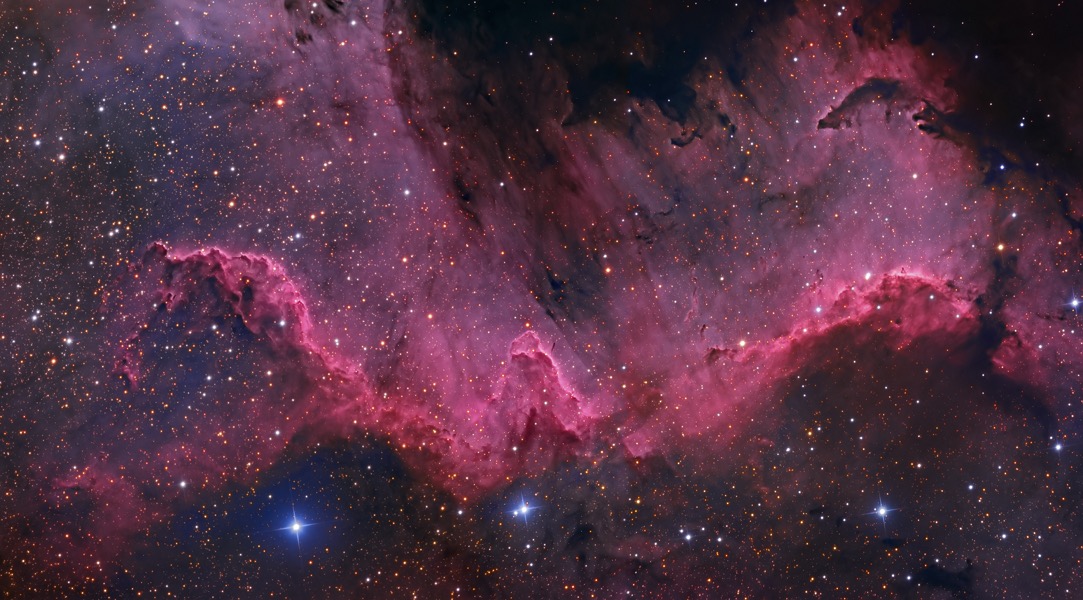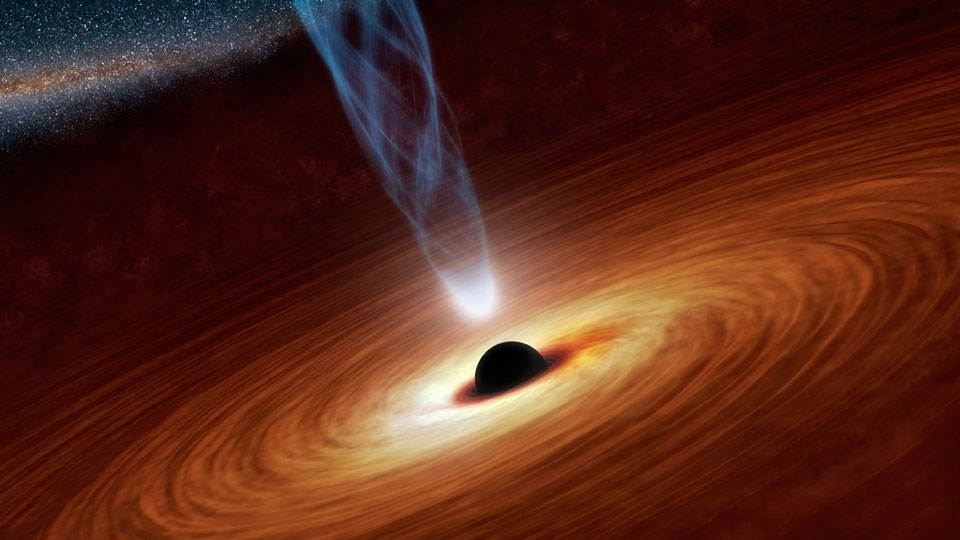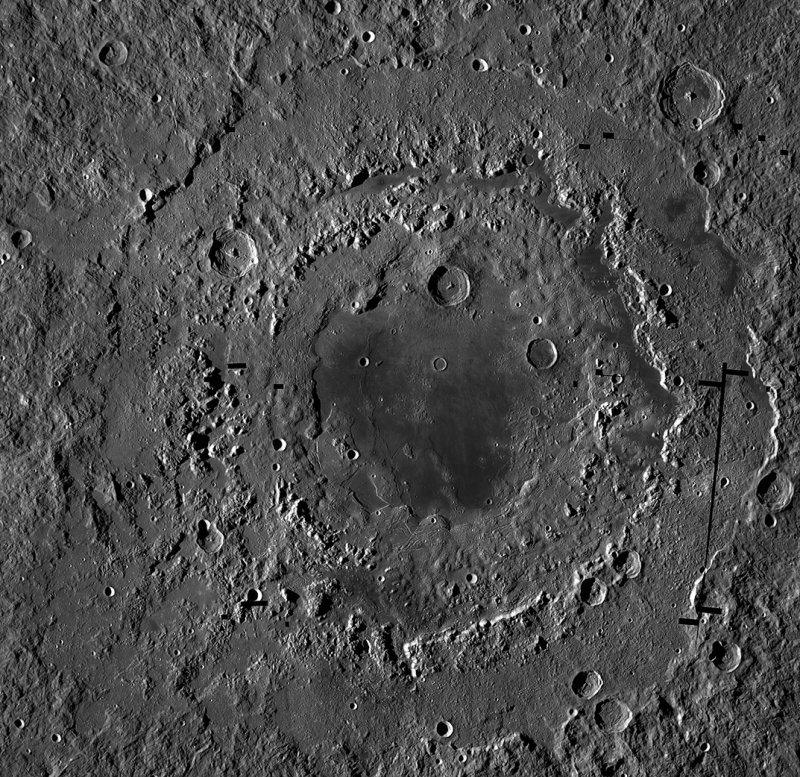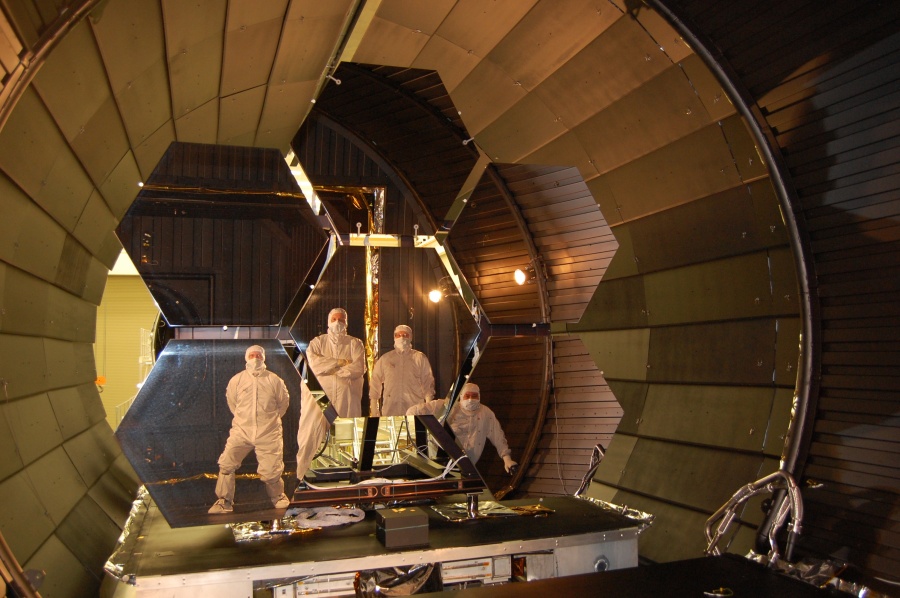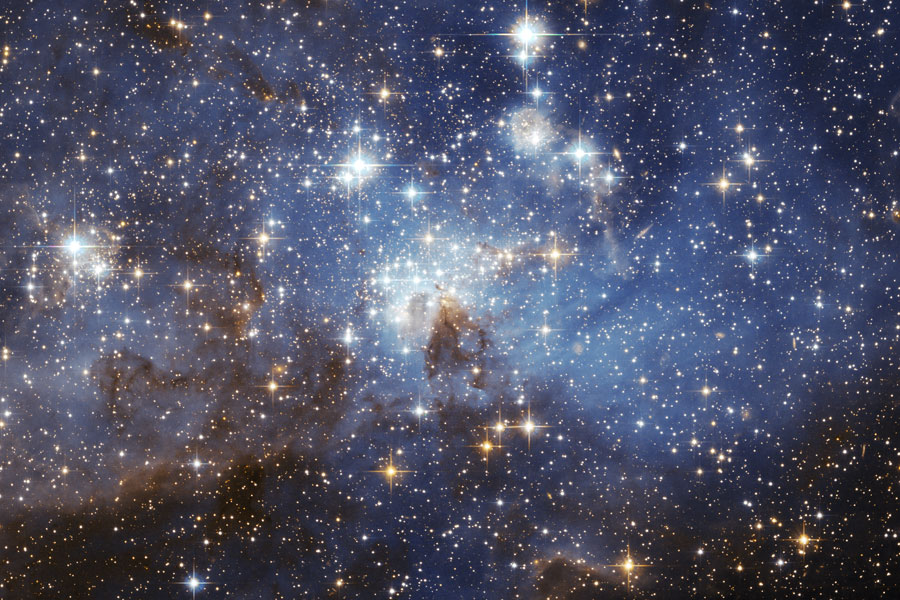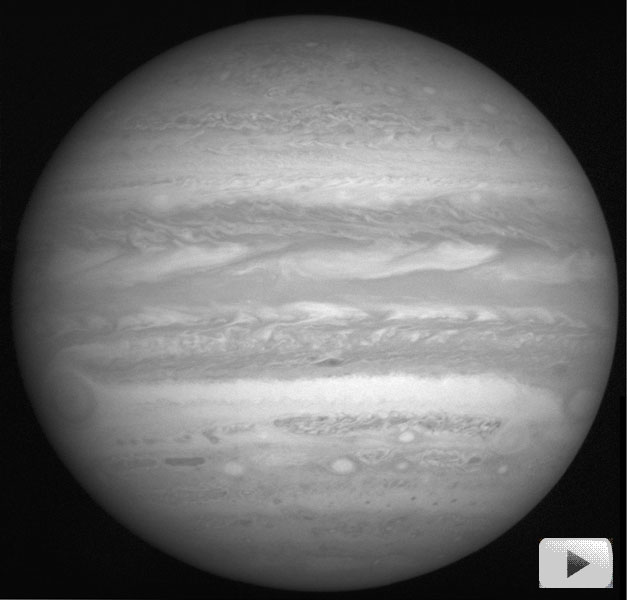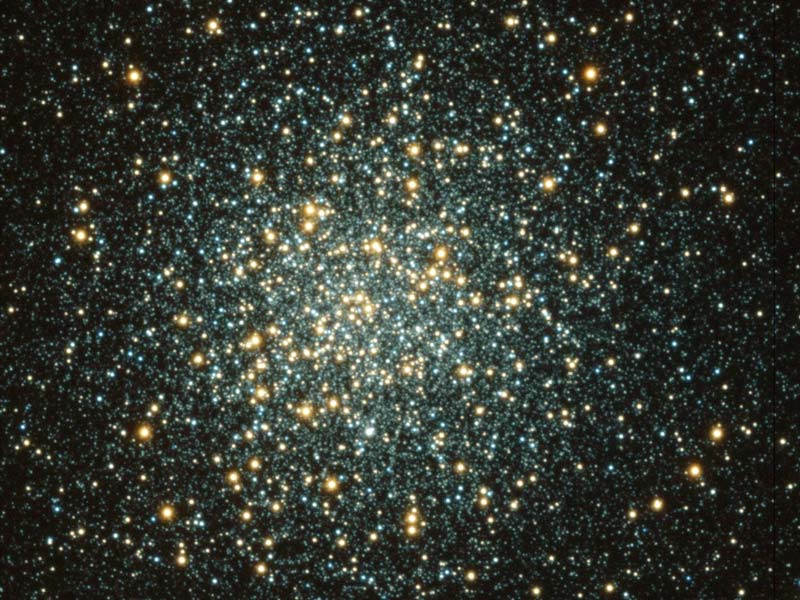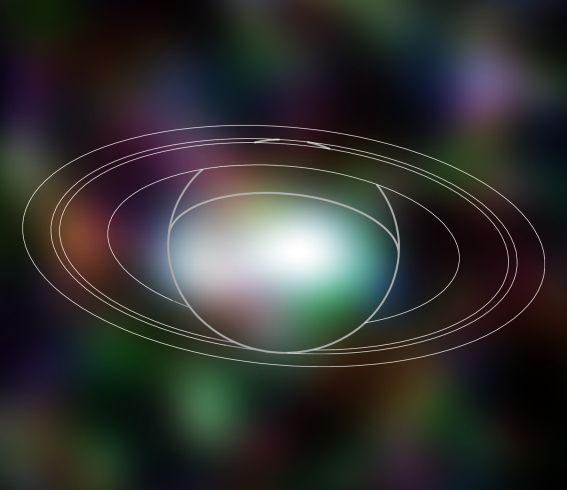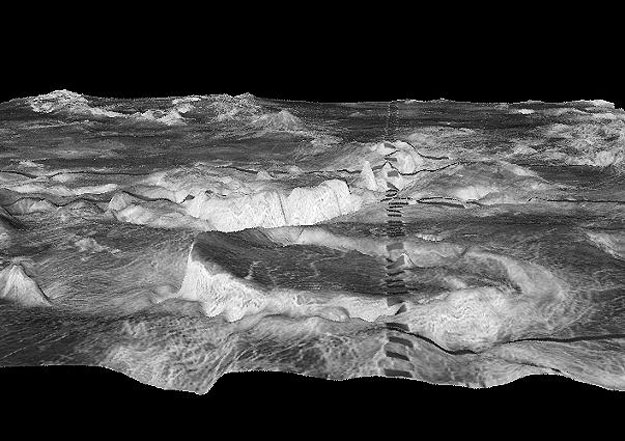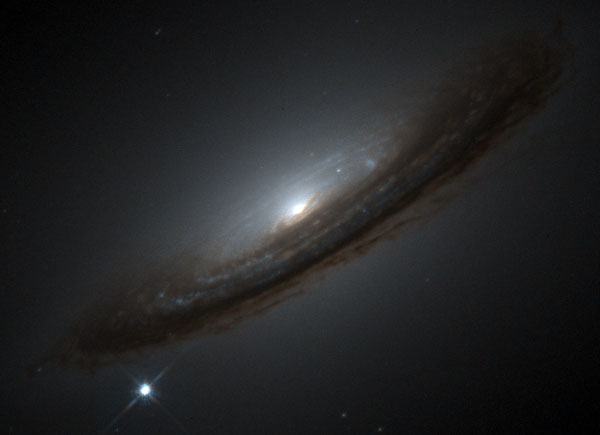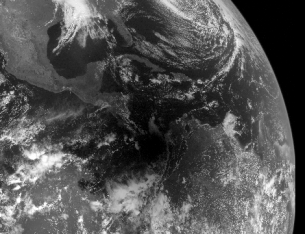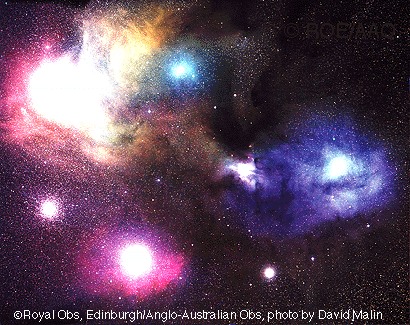| << Previous | Index | Next >> |
2015 The W-shaped ridge of emission featured in this vivid skyscape is known as the Cygnus Wall. Part of a larger emission nebula with a distinctive outline popularly called The North America Nebula, the cosmic ridge spans about 20 light-years. Constructed using narrowband data to highlight the telltale reddish glow from ionized hydrogen atoms recombining with electrons, the two frame mosaic image follows an ionization front with fine details of dark, dusty forms in silhouette. Sculpted by energetic radiation from the region's young, hot, massive stars, the dark shapes inhabiting the view are clouds of cool gas and dust with stars likely forming within. The North America Nebula itself, NGC 7000, is about 1,500 light-years away.
2014
Click to play embedded YouTube video.
Video Credit: SDO, NASA; Digital Composition: Kevin Gill (Apoapsys)
2013 How fast can a black hole spin? If any object made of regular matter spins too fast -- it breaks apart. But a black hole might not be able to break apart -- and its maximum spin rate is really unknown. Theorists usually model rapidly rotating black holes with the Kerr solution to Einstein's General Theory of Relativity, which predicts several amazing and unusual things. Perhaps its most easily testable prediction, though, is that matter entering a maximally rotating black hole should be last seen orbiting at near the speed of light, as seen from far away. This prediction was tested recently by NASA's NuSTAR and ESA's XMM satellites by observing the supermassive black hole at the center of spiral galaxy NGC 1365. The near light-speed limit was confirmed by measuring the heating and spectral line broadening of nuclear emissions at the inner edge of the surrounding accretion disk. Pictured above is an artist's illustration depicting an accretion disk of normal matter swirling around a black hole, with a jet emanating from the top. Since matter randomly falling into the black hole should not spin up a black hole this much, the NuSTAR and XMM measurements also validate the existence of the surrounding accretion disk.
2012
Flash Animation Credit & Copyright: Cary & Michael Huang
2011 Shaped like a target ring bull's-eye, the Mare Orientale is one of the most striking large scale lunar features. Located on the Moon's extreme western edge, it is unfortunately difficult to see from an earthbound perspective. Still, this mosaic of the multi-ring impact basin, the youngest of the large lunar basins shows off intriguing details (full resolution mosaic), based on Wide Angle Camera images from the Lunar Reconnaissance Orbiter. Only partially flooded by lava the Mare Orientale is over 3 billion years old, about 600 miles (950 kilometers) across and was formed by the impact of an asteroid sized object. The collision caused ripples in the lunar crust resulting in the concentric circular features. Though it may seem a little ironic to denizens of the space age who recognize the Moon as a dry and airless world, a dark, smooth lunar region is called a mare (plural maria), latin for sea, because astronomers once thought such regions might actually be seas.
2010 Who are these masked men? Technicians from Ball Aerospace and NASA at Marshall Space Flight Center's X-ray and Cryogenic Facility, of course, testing primary mirror segments of the James Webb Space Telescope (JWST). Scheduled for launch in 2014, JWST will be optimized for the infrared exploration of the early Universe, utilizing a primary mirror 21.3 feet across, composed of 18 hexagonal segments. Here, a group of JWST mirror segments are being prepared for tests to assure they meet the exacting mission requirements. The technicians' suits and masks help prevent contamination of the mirror surfaces. At the Marshall X-ray and Cryogenic Facility, the mirrors are tested in the large circular chamber after evacuating the air and cooling the chamber to -400 degrees Fahrenheit (only 60 degrees above absolute zero). The extremely low pressure and temperature simulate the JWST mirror operating environment in space. JWST mirror segment testing will continue for the next 18 months.
2009 At the right, Thor's Helmet (NGC 2359) seems to gaze across a lovely star field. The broad skyscape itself covers about 1.5 degrees or 3 full moons toward the constellation Canis Major. A close look at the lower left corner of the image might identify the object of the cosmic stare as a faint, round nebula. Heroically sized even for a Norse god, Thor's Helmet is about 30 light-years across. The helmet is actually more like an interstellar bubble, blown as a fast wind from the bright, massive star near the bubble's center sweeps through a surrounding molecular cloud. Known as a Wolf-Rayet star, the central star is an extremely hot giant thought to be in a brief, pre- supernova stage of evolution. In contrast, the faint, round nebula is a planetary nebula, the gaseous shroud of a dying lower mass star. The distance to Thor's Helmet is estimated to be about 15,000 light-years.
2008 How do stars form? To better understand this complex and chaotic process, astronomers used the Hubble Space Telescope to image in unprecedented detail the star forming region LH 95 in the nearby Large Magellanic Cloud galaxy. Usually only the brightest, bluest, most massive stars in a star forming region are visible, but the above image was taken in such high resolution and in such specific colors that many recently formed stars that are more yellow, more dim, and less massive are also discernable. Also visible in the above scientifically colored image is a blue sheen of diffuse hydrogen gas heated by the young stars, and dark dust created by stars or during supernova explosions. Studying the locations and abundances of lower mass stars in star forming regions and around molecular clouds helps uncover what conditions were present when they formed. LH 95 spans about 150 light years and lies about 160,000 light years away toward the southern constellation of the Swordfish (Dorado).
2007 What would it be like to coast by Jupiter and watch it rotate? This was just the experience of the New Horizons spacecraft as it approached and flew by Jupiter earlier this year. Clicking on the image will bring up a movie of what the robotic spacecraft saw. Visible above in the extensive atmosphere of the Solar System's largest planet are bands and belts of light and dark clouds, as well as giant rotating storm systems seen as ovals. Other movies compiled by New Horizons and other passing spacecraft have captured the clouds swirling and moving relative to themselves. Jupiter has a diameter of about eleven times that of our Earth, and rotates once in about 10 hours. The robotic New Horizons spacecraft continues to speed toward the outer Solar System where it is expected to approach Pluto in 2015. mpeg
2006 This huge ball of stars predates our Sun. Long before humankind evolved, before dinosaurs roamed, and even before our Earth existed, ancient globs of stars condensed and orbited a young Milky Way Galaxy. Of the 200 or so globular clusters that survive today, M3 is one of the largest and brightest, easily visible in the Northern hemisphere with binoculars. M3 contains about half a million stars, most of which are old and red. Light takes about 35,000 years to reach us from M3, which spans about 150 light years. The above picture is a composite of blue and red images.
2005 Don't be fooled by the familiar pattern. The graceful spiral structure seen in this computer visualization does not portray winding spiral arms in a distant galaxy of stars. Instead, the graphic shows spiral shock waves in a three dimensional simulation of an accretion disk -- material swirling onto a compact central object that could represent a white dwarf star, neutron star, or black hole. Such accretion disks power bright x-ray sources within our own galaxy. They form in binary star systems which consist of a donor star (not shown above), supplying the accreting material, and a compact object whose strong gravity ultimately draws the material towards its surface. For known x-ray binary systems the size of the accretion disk itself might fall somewhere between the diameter of the Sun (about 1,400,000 kilometers) and the diameter of the Moon's orbit (800,000 kilometers). One interesting result of the virtual reality astrophysics illustrated here is that the simulated disk develops instabilities which tend to smear out the pronounced spiral shocks.
2004 Above, the ringed planet Saturn shines in x-rays. Otherwise beyond the range of human vision, the eerie x-ray view was created by overlaying a computer generated outline of the gas giant's disk and ring system on a false-color picture of smoothed, reconstructed x-ray data from the orbiting Chandra Observatory. The data represent the first clear detection of Saturn's disk at x-ray energies and held some surprises for researchers. For starters, the x-rays seem concentrated near the planet's equator rather than the poles, in marked contrast to observations of Jupiter, the only other gas giant seen at such high energies. And while Saturn's high energy emission is found to be consistent with the reflection of x-rays from the Sun, the intensity of the reflected x-rays was also found to be unusually strong. Outside the planet's disk, only a faint suggestion of x-rays from Saturn's magnificent ring system is visible at the left.
2003 The far side of the Moon is rough and filled with craters. By comparison, the near side of the Moon, the side we always see, is relatively smooth. Since the Moon is rotation locked to always point the same side toward Earth, humanity has only glimpsed the lunar farside recently -- last century. The light highlands of the far side are older than the dark Maria of the near side. A thinner crust on the near side that allowed for more dark lava flows is thought to be the cause of differences between the two sides. The cause for the crust thickness differences is still being researched, however. The large impact basin pictured above is Crater 308. It spans about 30 kilometers and was photographed by crew of Apollo 11 as they circled the Moon in 1969.
2002 What could cause a huge cylindrical mountain to rise from the surface of Venus? Such features that occur on Venus are known as coronas. Pictured above in the foreground is 500-kilometer wide Atete Corona found in a region of Venus known as the Galindo. The image was created by combining multiple radar maps of the region to form a computer-generated three-dimensional perspective. The series of dark rectangles that crosses the image from top to bottom were created by the imaging procedure and are not real. The origin of massive coronas remains a mystery although speculation holds they result from some form of volcanism. Studying Venusian coronas help scientists better understand the inner structure of both Venus and Earth.
2001 When did the Cigar Galaxy light up? Evidence indicates how M82, the Cigar Galaxy, became so bright and peculiar: it collided with neighboring galaxy M81. Astronomers become detectives, however, when trying to figure out when this collision occurred. Inspection of this and other Hubble Space Telescope images now indicate massive young globular star clusters were formed during the encounter. Stars in these clusters that are 600 million years old are just now exhausting their central hydrogen fuel, indicating that the Cigar Galaxy's brightening occurred just that long ago. M82 is located about 12 million light years away and visible with binoculars towards the constellation of Ursa Major. The star-field shown above spans about 10,000 light years.
2000 Far away, long ago, a star exploded. Supernova 1994D, visible as the bright spot on the lower left, occurred in the outskirts of disk galaxy NGC 4526. Supernova 1994D was not of interest for how different it was, but rather for how similar it was to other supernovae. In fact, the light emitted during the weeks after its explosion caused it to be given the familiar designation of a Type Ia supernova. If all Type 1a supernovae have the same intrinsic brightness, then the dimmer a supernova appears, the farther away it must be. By calibrating a precise brightness-distance relation, astronomers are able to estimate not only the expansion rate of the universe (parameterized by the Hubble Constant), but also the geometry of the universe we live in (parameterized by Omega and Lambda). The large number and great distances to supernovae measured over the past few years have been interpreted as indicating that we live in a previously unexpected universe.
1999 Stars like the Sun use hydrogen for fuel, "burning" hydrogen into helium at their cores through nuclear fusion. But what happens when that hydrogen runs out? For a while, hydrogen burns in a shell surrounding the stellar core and the star expands to become a red giant. The bright reddish-orange stars in this beautiful two-color composite picture of the old globular star cluster M10 are examples of this phase of stellar evolution. Yet the bright blue stars apparent in M10 have evolved beyond the simple, hydrogen shell burning stage. These stars have become "horizontal branch" giants with core temperatures hot enough to burn helium into carbon. In this image, only the barely visible, faint, gray-looking stars are likely to still be burning hydrogen at their cores.
1998 When the Moon's shadow reached out and touched the Earth last month, the result was a Solar Eclipse. Such an eclipse is total only for observers located along a narrow path corresponding to the ground track of the shadow's dark central portion or "umbra". For this eclipse, racing along at nearly 1,200 miles per hour, the Moon's umbra obligingly crossed over land along pleasant tropical locales in South America and the Caribbean islands. Totality lasted for about 3 minutes or less at a given location. Sizable fractions of North and South America fell within the lighter but much wider outer shadow region, the "penumbra", and witnessed a partial eclipse. This movie gif follows the Moon's shadow from Central and South America eastward across the Atlantic - as seen from the vantage point of an orbiting Geostationary Operational Environmental Satellite (GOES), 22,000 miles above Earth. The three frame animation spans about 2 hours. GOES satellite images are a corner stone of U.S. weather monitoring and forecast operations.
1997 Saturn is unusual but photogenic. The second largest planet in our Solar System, behind Jupiter, has been easily identifiable at night since history has been recorded. It was only with the invention of the telescope, however, that any evidence of its majestic ring system became apparent. Saturn itself is composed of mostly hydrogen and helium gas. Saturn's rings are composed of many ice chunks ranging in size from a penny to car. The above picture of Saturn is one of the earliest taken by the Hubble Space Telescope and is a digital reconstruction of three color images. The Cassini mission to Saturn is scheduled to be launched later this year and should reach Saturn in 2004.
1996
| << Previous | Index | Next >> |
